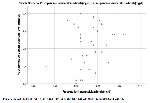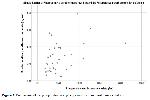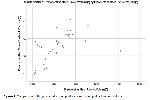Data reported in previous studies show that PHPT leads to a high risk of cardiovascular diseases
16. Atherosclerosis is one of the most important causes of cardiovascular diseases, and platelets play a major role in the etiopathogenesis of atherosclerotic vascular diseases
11.
Hypercalcemia has been shown to be related to increased mortality in patients with PHPT 17. Yu et al. 18 reported that patients with hyperparathyroidism had a standardized mortality rate of 2.62, which was higher than other causes. The authors examined the records of 4461 patients between 1987 and 1994 to investigate the risk of death in those who underwent PTX for PHPT. The risk of death from cardiovascular diseases was found to be increased by 1.71 times among men and 1.85 times among women. Several other studies have similarly shown that PHPT leads to a high risk for cardiovascular diseases 16,19. Atherosclerosis is one of the main causes of the pathophysiology of cardiovascular diseases in the majority of cases. Platelets play an important role in the etiopathogenesis of atherosclerotic vascular diseases 11. In light of findings indicating that the presence of specific PHPT variables such as serum calcium and PTH constitutes a predictable risk of death, it has been suggested that surgery in patients with PHPT not only relieves signs and symptoms but also improves prognosis 20. Vestergaard et al. 21 evaluated preoperative and postoperative cardiovascular events and postsurgical mortality for PHPT using a historical follow-up design. As a result of the study, it was reported that in patients with moderately high serum calcium levels (mean 1.65 mmol/l), there was an increase in acute myocardial infarction for up to 10 years before surgery, but this decreased to a normal level within the postoperative one year. In a study by Ogard et al. 22 conducted in Denmark, the mortality rates of patients with PHPT due to cardiovascular disease and cancer were investigated compared to the other population. A reduction in the standard mortality rate was observed in women who underwent PTX, while no difference was found in men. Leifsson et al. 23 explored the relationship between high serum calcium values and morbidity and mortality. As a result, they argued that the risk of premature death in men under the age of 50 years increased with high serum calcium levels even in the normal range and that this increase might be largely due to cardiovascular diseases. In this study, the decrease in the serum calcium level was found to be statistically significant in the sixth month after PTX. Considering that PHPT is related to hypertension, coronary atherosclerosis, and other cardiovascular diseases, Kamycheva et al. 24 evaluated serum PTH levels as an independent risk factor for coronary heart disease in patients with serum calcium values within the reference range and reported that elevated serum PTH increased the risk of coronary heart disease in these individuals and this could indicate the role of PTH in the development of coronary heart disease. Anderson et al. 25 investigated whether elevated PTH was associated with cardiovascular diseases. As a result of their research, they argued that PTH presented as a complementary and independent predictive value for cardiovascular diseases and mortality. Grandi et al. 26 evaluated the prognostic value of initial PTH for subsequent cardiovascular events and all-cause deaths in a high-risk population with stable coronary heart disease and reported that a PTH value above the normal range was an independent predictive parameter for prognosis in patients with stable coronary heart disease. Recent studies have investigated whether patients with hyperparathyroidism are at the risk of developing different complications such as increased morbidity and mortality from cardiovascular diseases and reported that left ventricular hypertrophy, impaired glucose metabolism, and dyslipidemia could be resolved after surgery and that successful PTX can reduce the higher risk of mortality among patients with PHPT due to cardiovascular diseases 12,13. In the current study, the decrease in the serum PTH level in the sixth month after PTX was found to be statistically significant.
Platelets are not only essential for primary hemostasis and endothelial repair, but they also play a key role in the development of acute coronary syndromes, and in addition to contributing to cerebrovascular events, they are involved in the creation and expansion of atherosclerotic plaques 27. After separating from the bone marrow, platelets circulate for about ten days. The primary function of platelets is to stop bleeding after tissue trauma and vascular injury. After the initial adhesion of platelets to the extracellular matrix, the repair process requires a rapid response to autocrine and paracrine mediators, including adenosine diphosphate, thrombin, epinephrine, and thromboxane A2. These mediators strengthen and sustain the initial platelet response. Besides, they aggregate platelets in the bloodstream to form a growing hemostatic plug 28. The use of antiplatelet agents in preventing and treating cardiovascular, cerebrovascular and peripheral artery diseases, supported by rich evidence from clinical studies, has confirmed platelets' role in the atherothrombotic process 29. In the present study, there was a statistically significant decrease in the number of blood platelets after PTX.
Platelet volume is a parameter that determines platelet function, and large-volume platelets are more hemostatically active 27,29,30. Platelet size, measured as MPV, is a simple and accurate way of predicting platelet activity 27. Bath et al. 31 reported that high MPV was associated with other platelet activation markers, including increased platelet aggregation, thromboxane synthesis, and adhesion molecules. Braunwald 32 determined that mortality and the need for revascularization were higher in patients with myocardial infarction with high MPV values. In contrast, Şahin et al. 33 compared the MPV values of patients with and without coronary artery disease and found no statistically significant difference. In the current study, the decrease in the MPV level after PTX was statistically significant.
The study's limitations concern its be retrospective, small sample size, and no control group to compare the blood values with PHPT and healthy individuals. The results should be supported by prospective studies with a large sample size and a control group.
As a result, in this study there was a statistically significant decrease in the serum calcium, serum PTH, blood platelet count and MPV values at the sixth month after successful PTX compared to the initials levels that had been elevated due to PHPT. As a result, we consider that PTX can reduce the risk of atherosclerosis and cardiovascular diseases in patients with PHPT.






